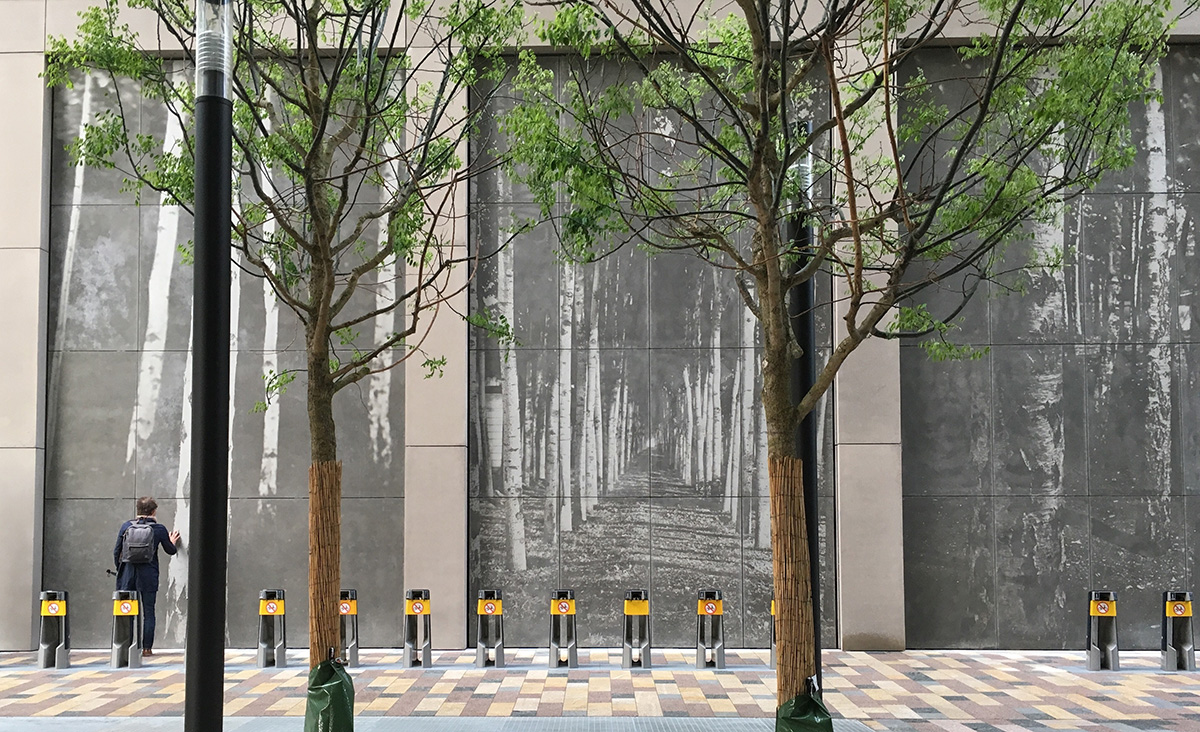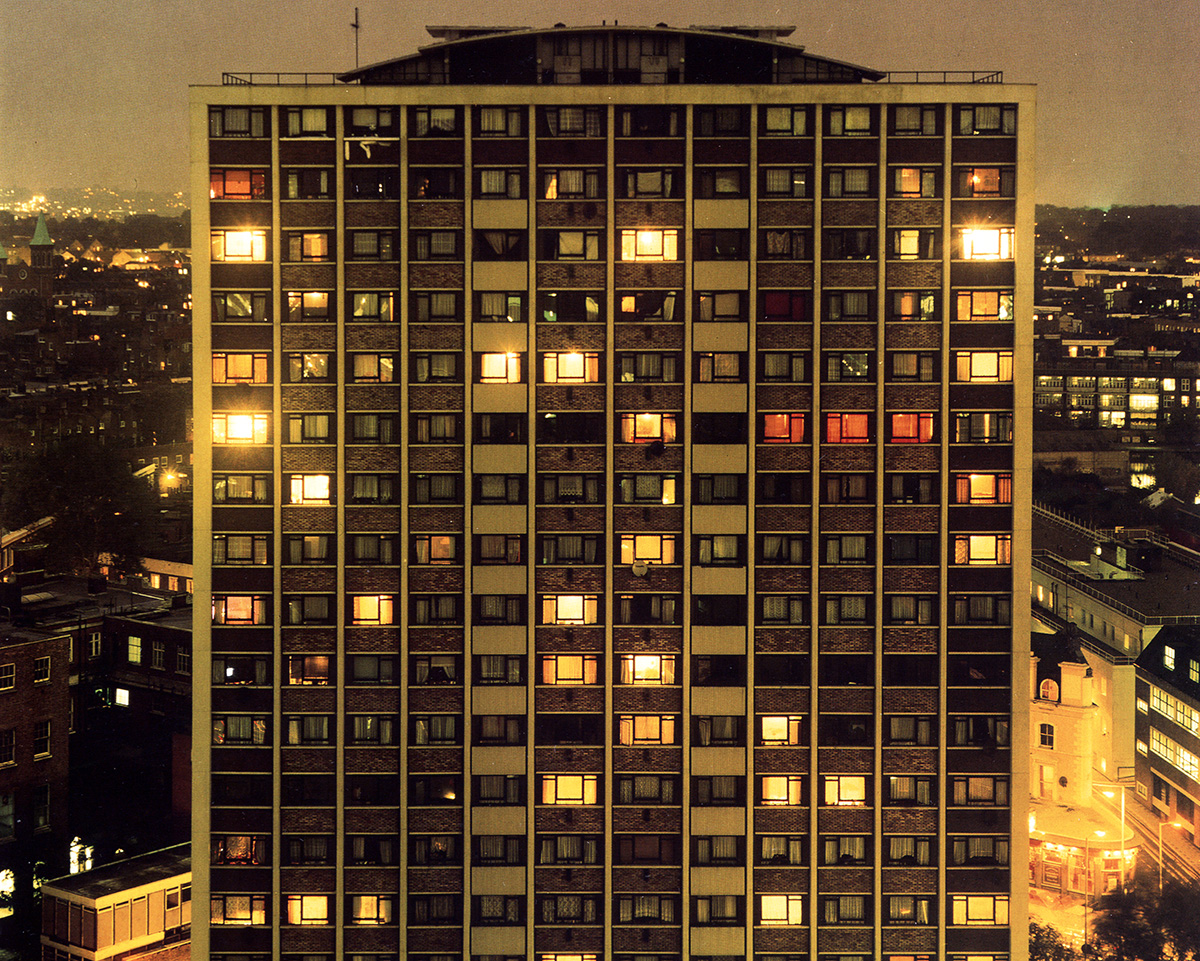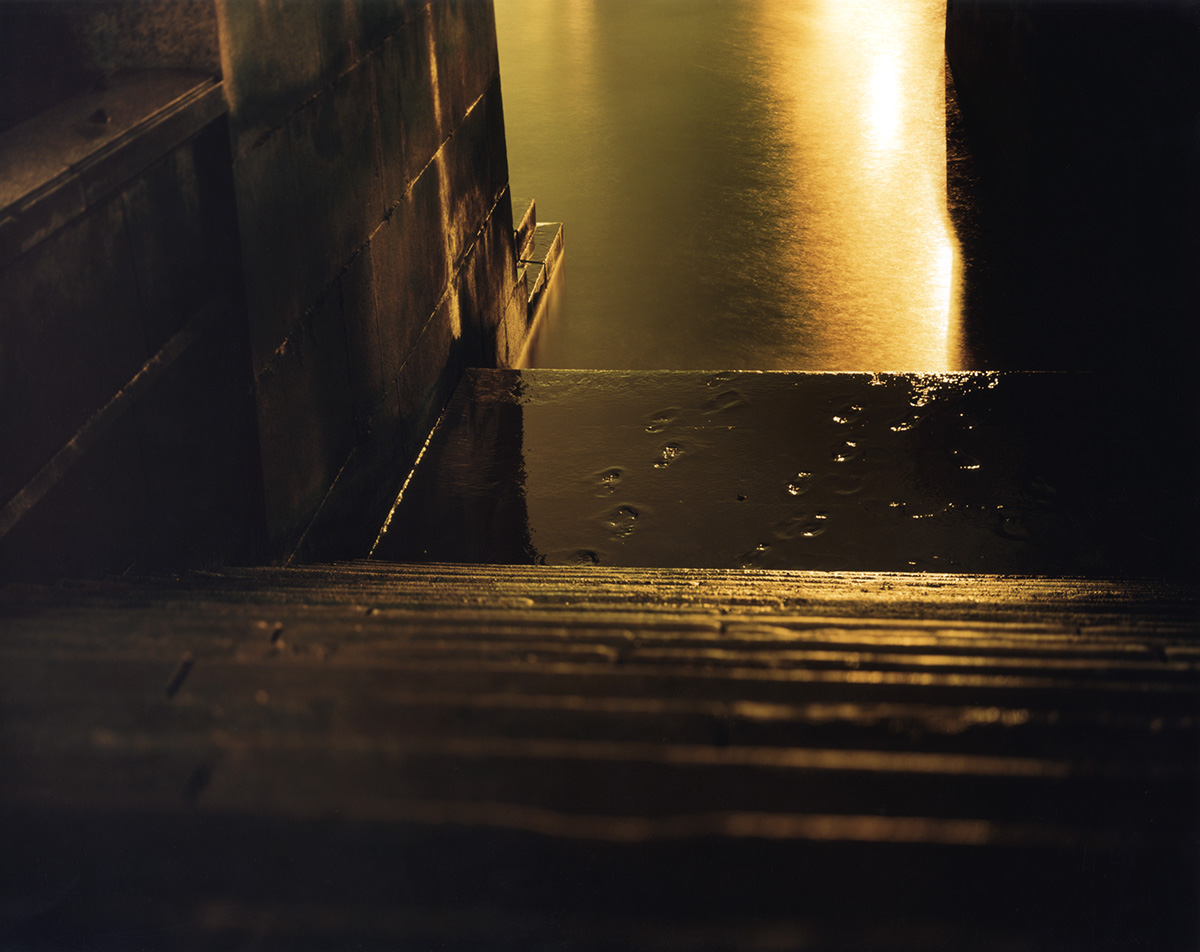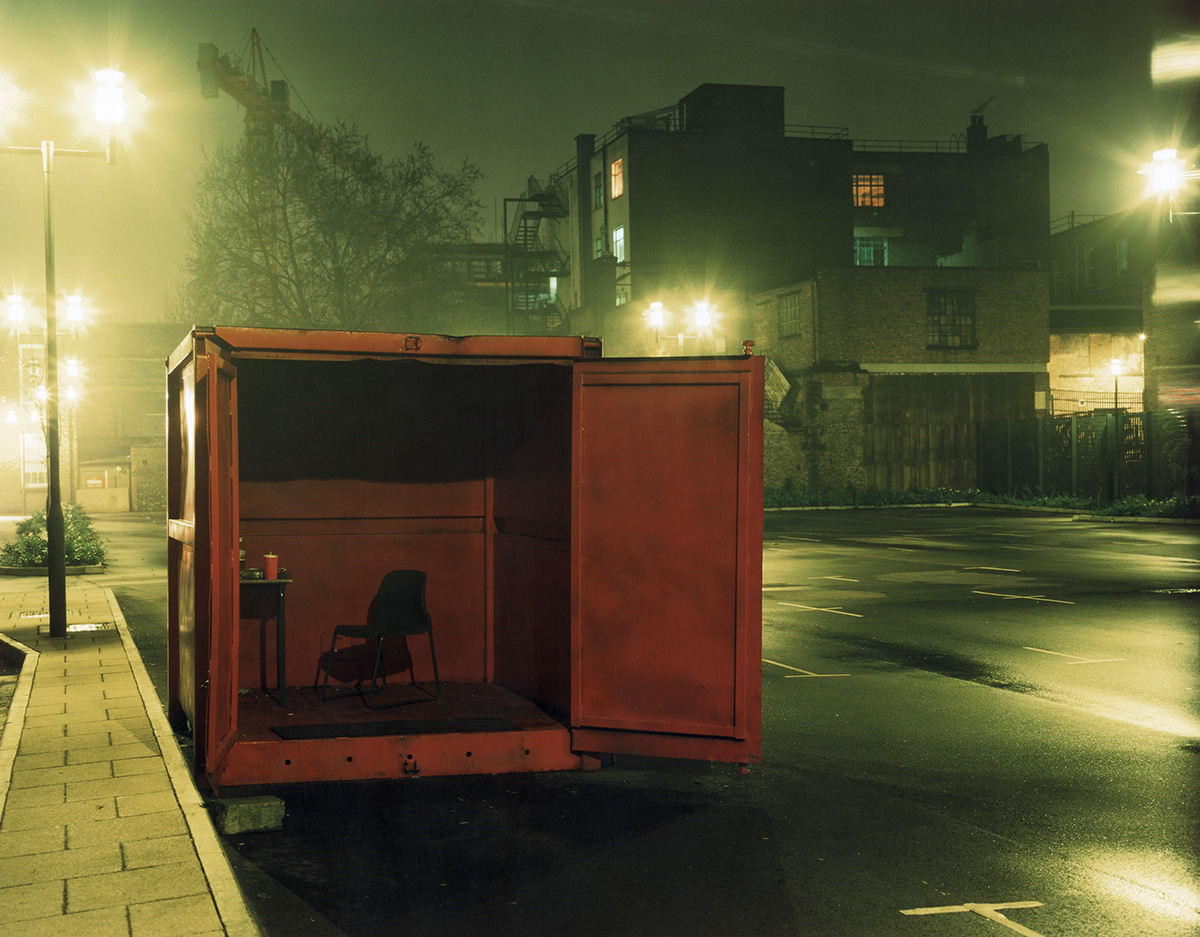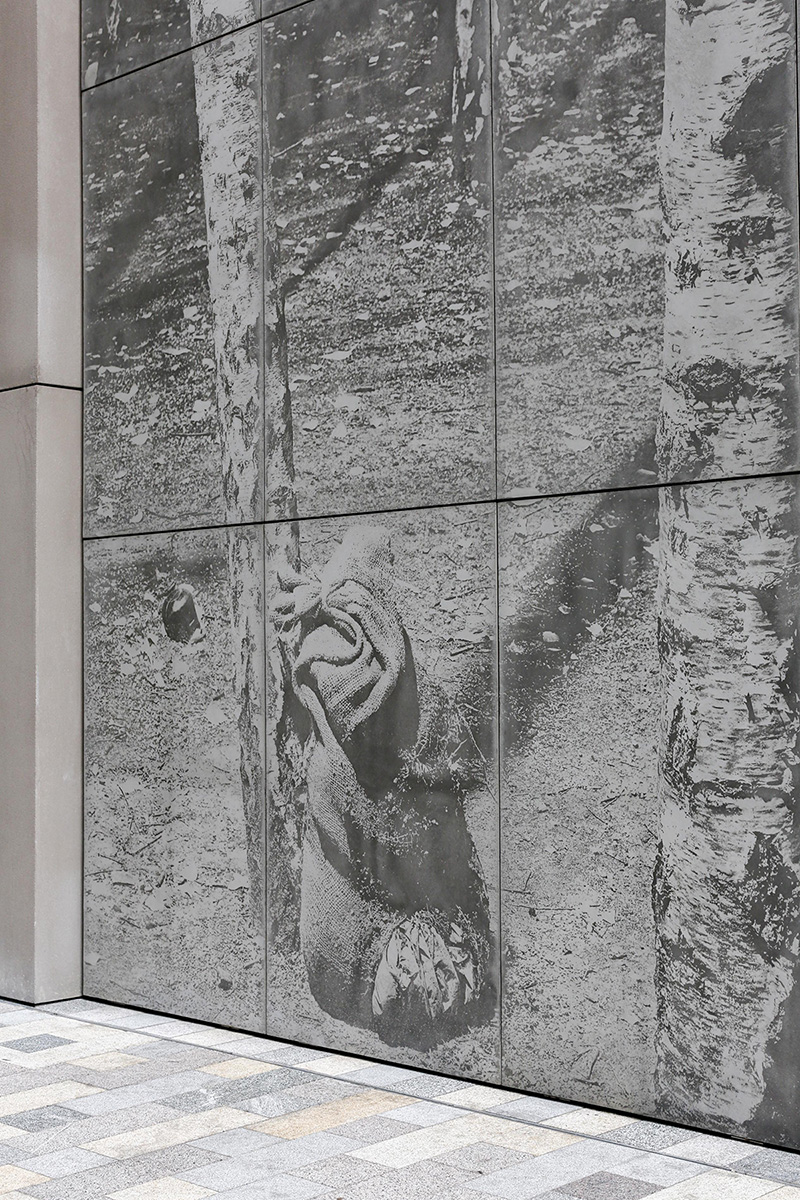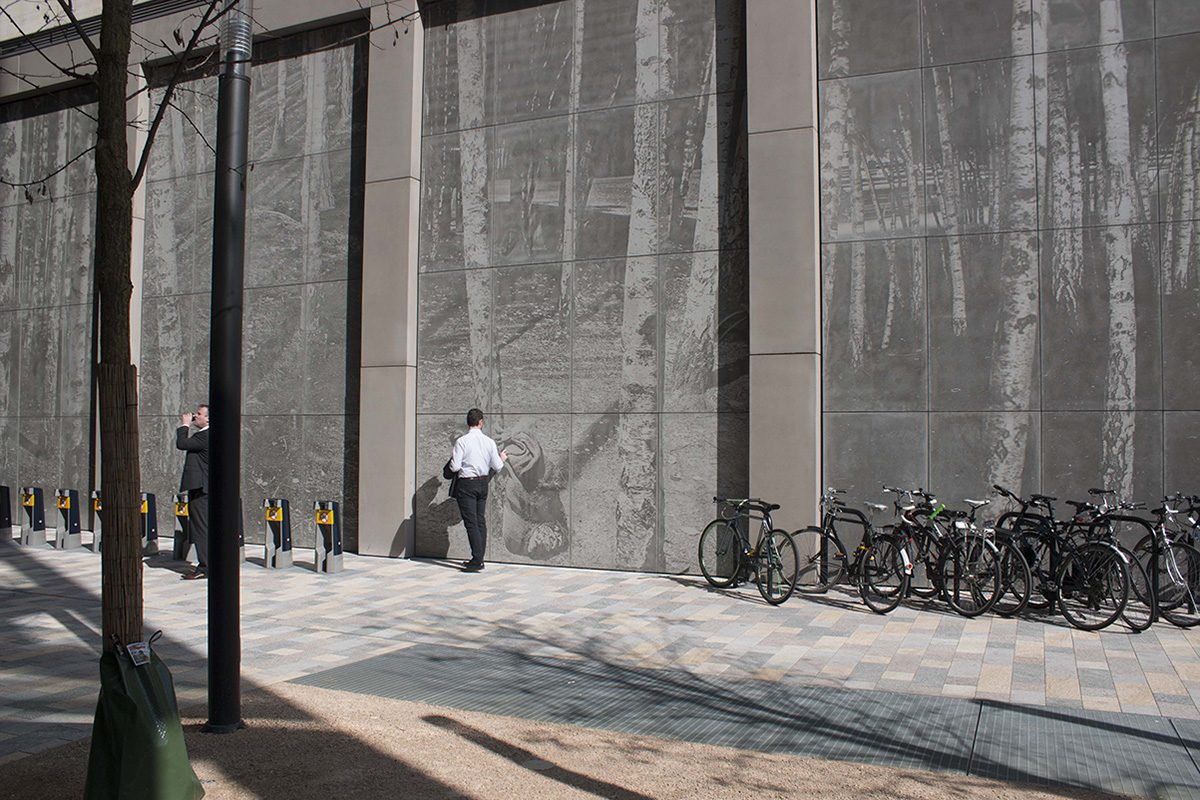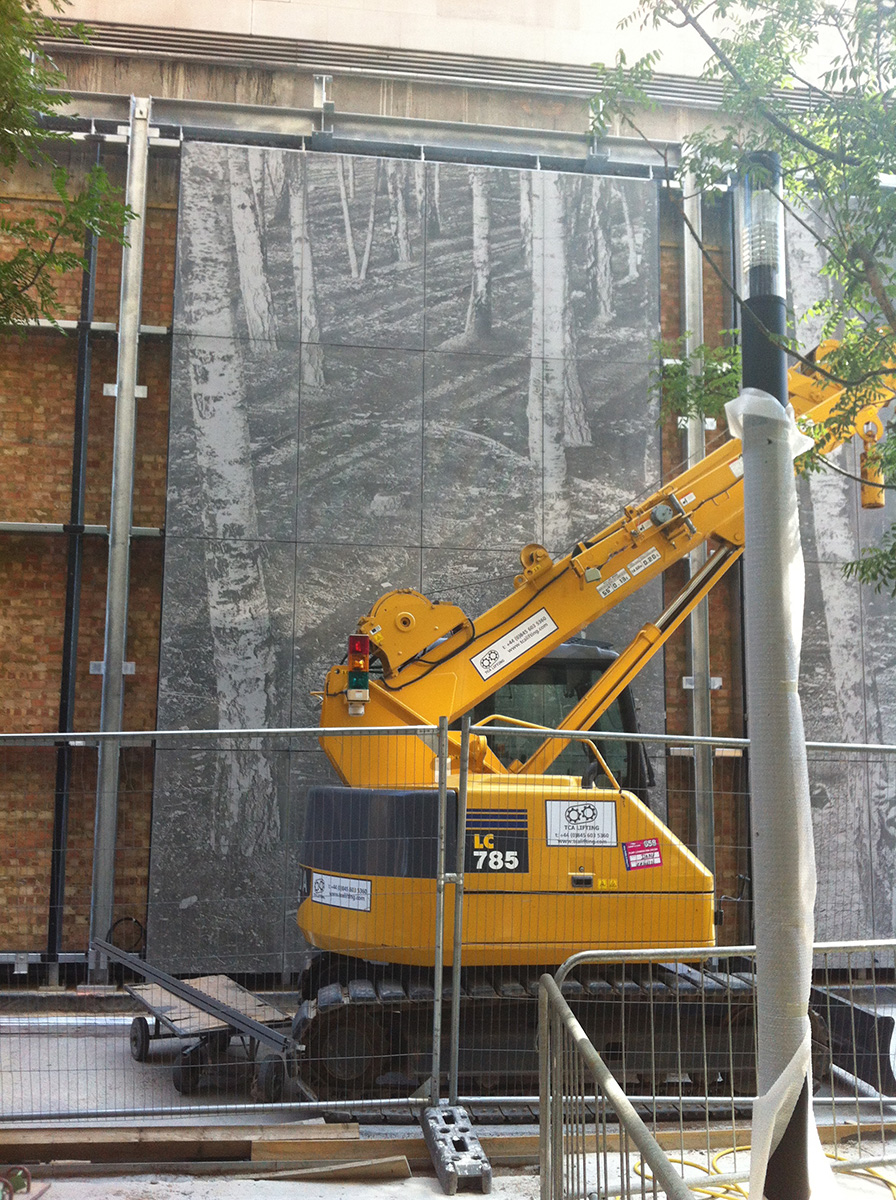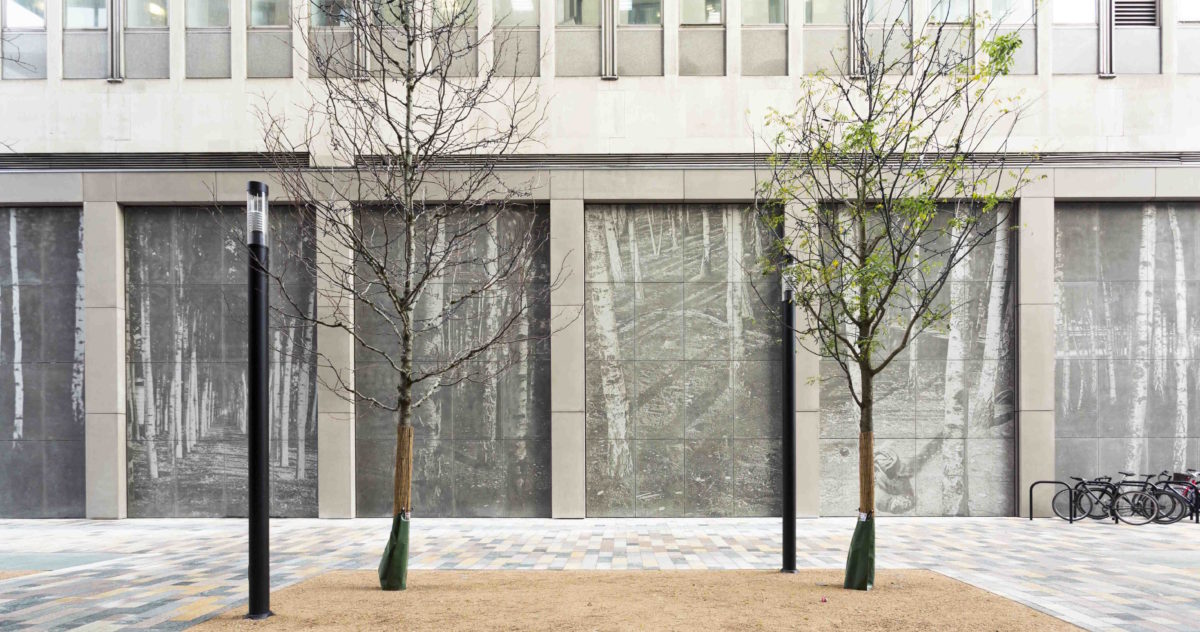Jerwood/Photoworks Awards mentor, Rut Blees Luxemburg discusses the ideas behind her practice and the public art work 'Silver Forest' installed at Westminster City Hall.
PW: For anyone unfamiliar with your work, could you talk about the ideas and themes around your general practice?
RBL: In the early 1990’s I moved from Germany to London to study photography at the London College of Printing, where I was taught by Karen Knorr. London was experiencing a dynamic shift in the arts; the palpable buzz around the YBA’s and the emergence of a plethora of artist-run spaces and warehouse exhibitions created a fertile and energetic scene of possibility. I became part of an artist-run space called plummet, situated on the 16th floor of a council block off City Road. Other artists were Sophy Rickett, Carey Young and Billy Shoebridge, whose flat was the host for plummet. It was in this experimental environment that my interest in the representation of cities really came into focus and my photograph for the cover of The Streets debut album was made there.

My interest in the urban realm led me to the series Liebeslied, photographed in London, exploring the public spaces of the city, as shared spaces that can evoke a sense of the ‘common sensual’.
PW: Although taken in public spaces, your work rarely shows their inhabitants. Does the presence of people deter from the poetics of the space?
RBL: Yes, because I’m not thinking about individual stories, but around the space as a site of ideas and immersion. There are footsteps in the mud, the human presence is absent. The city in my photographs is a structure in which the individual narrative does not dominate, but becomes a template to try and locate something that can be described as common, such as a public shared stairwell to the river. One can also think about the city as a ‘character’ in these photograph, one that’s alluring, open, glowing even… yet also ambiguously wet, slippery and dark.

PW: So although these places are real, they start to take on a more internal, reflective space. What is it about shared urban spaces that captures your interest?
RBL: The spaces are very real, but at the same time they’re also a portal into the imagination and that includes the imagination of different possibilities. On the one hand, the city is build up of layers of history. Those steps down to the Thames would have incredible stories to tell if they could. When Goethe arrived in Rome he exclaimed ‘Speak Stones!’
Yet the stones are mute and so the writer, or the artist, might speak for them, but not just of the memories of place, because on the other hand, the city is always in a state of emergence, so what are the premonitions or what are the possibilities this space we share can evoke and enable?

PW: Your newest body of work Silver Forest takes place in a public space in Westminster. Can you explain what this work is about and how the public encounters you’re interested in within public-space function in this artwork?
RB:: In 2011, I was approached by the architect Patrick Lynch to propose an artwork for a site on Victoria Street, where they were designing a new residential and office building. The site, a large façade on Westminster City Hall, measured 30 x 7 metres. The notion of monumental photography in the public context is complex, if the question of permanence is addressed. My proposal of Silver Forest was realized by casting the photographs in concrete, a new technology developed in the UK which allows for a photographic rendering on a large scale, that’s also architectural in materiality and durability and cost, I might add.

The work shows urban birch forests in Beijing and London, two polluted cities, where these pioneer trees survive, and where the dust of the city adds a ghostly pattern to their graphic bark. Silver Forest hopes to draw attention to the relationship between city and forest, the desire for immersion and getting lost and the hidden stories that are actually very visible but not discussed. In the case of Silver Forest, an abandoned heavy sack, splitting at the seams, is evidence of an excessive accumulation. An encounter with an artwork might be most satisfying if there is a double-take.

PW: The installation images give a sense of depth to an otherwise flat surface creating the illusion of space. You mentioned the word immersive and they certainly are. They’re almost overwhelming in their scale, suggesting you could walk straight back into these forests. What is the viewer experience you’re hoping for? Is it about escaping the city?
RBL: Silver Forest is not about the notion of escape but about entry; an entry-point into an understanding of the complexities of the relationship between the city and nature, where the importance of the forest and its beneficial forces and maybe even pedagogical qualities (i.e nature as teacher of life-skills) are thought about, where the historical and cultural reciprocal enmeshment between architecture and nature are alluded to, (towering vertical trees correspond to the architectural columns across the passage) and an entry, in the sense of proposing a future city, where the relationship to nature is being foregrounded.

PW: What role do you think if any, digital technologies play in your work?
RBL: The technology of making a photograph into a concrete panel appeals to me as it goes against digital technology’s promise of endless replication, distribution and communication…
Here the technology enables a work that’s physical and materially solid and exists in a specific local context responding to that particular place and its condition. The technology allowed me to create a phantasmagoria, but it is a concrete manifestation asserting itself through its physicality.


Rut Blees Luxemburg’s new work Eldorado Atlas will be shown at Galerie Dominique Fiat, Paris, during Paris Photo 2017 .
For more of Rut’s work, click here.
For more from our Jerwood/Photoworks Awards Mentors and Awardees, click here.
